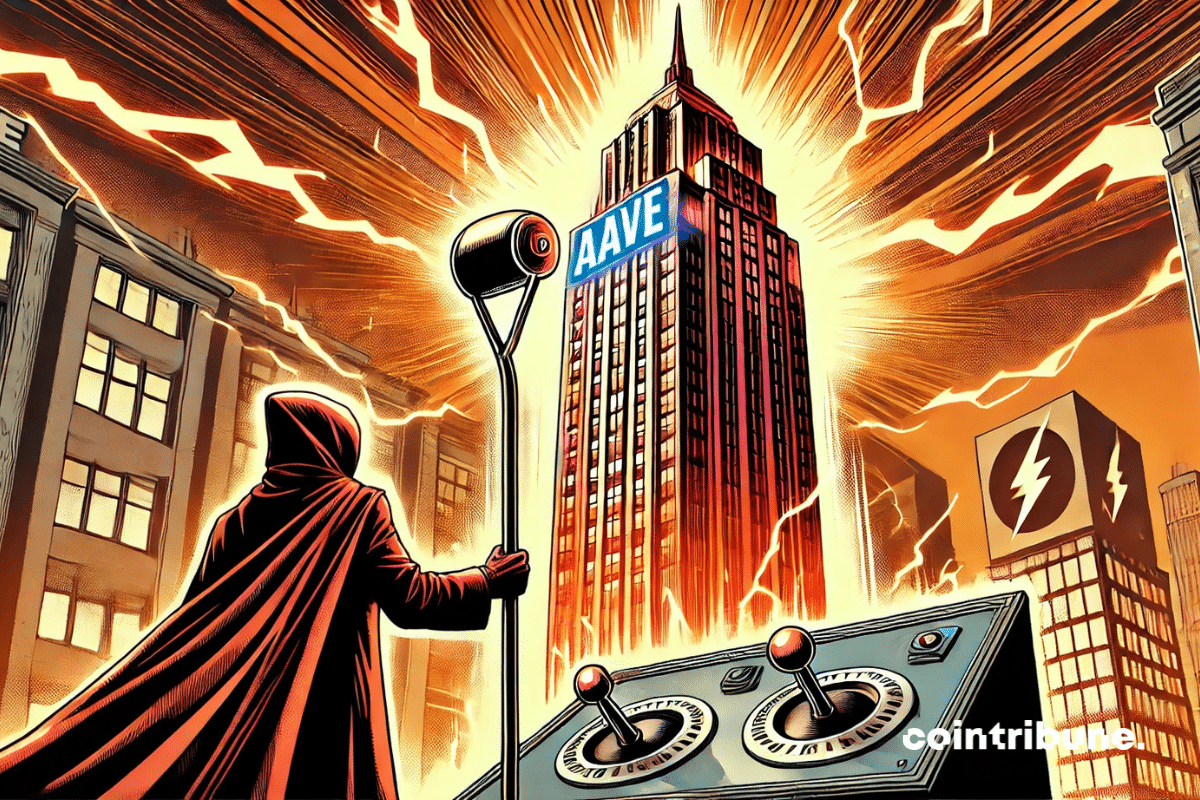The global economy operates in cycles where fiat currencies play a crucial role in market dynamics. Indeed, the weakening of the US dollar, often seen as an indicator of macroeconomic adjustment, seems this time to open a window of opportunity for cryptocurrencies. According to Raoul Pal, analyst and CEO of Real Vision, the fall of the dollar could be the catalyst for a particularly bullish second quarter in 2025 for bitcoin and the entire crypto market. This optimism is based on historical data and well-established macroeconomic trends. But then, is this situation the signal of a sustainable rally or merely a temporary market reaction?
News
Michael Saylor dropped some crumbs on the Fox News microphone on the eve of the roundtable organized by the White House with leaders of the crypto community.
The landscape of crypto trading platforms is marked by a diversity of options, each with its own advantages and disadvantages in terms of fees. Comparing these fees is essential today for traders to choose the platform that best meets their needs and investment strategy.
On March 6, 2025, the administration of the Dantewada district, located in the state of Chhattisgarh in India, announced the digitization of more than 700,000 land documents dating back to the 1950s, now secured on the Avalanche blockchain. This initiative aims to ensure the transparency and integrity of land records, preventing any alteration or forgery.
The Financial Markets Authority (AMF) now imposes new fees on licensed crypto service providers in France. This measure, established by decree No. 2025-169 of February 21, 2025, is likely to weigh heavily on a sector that is already heavily regulated by the European MiCA regulation.
Bitcoin, after creating an illusion, falls back into uncertainty. Traders are sweating profusely, caught between vanished hope and growing fear.
On March 5, 2025, major news shakes the crypto world: U.S. Secretary of Commerce, Howard Lutnick, hinted that the Trump administration is preparing to unveil an ambitious strategy concerning a reserve solely of bitcoin. This announcement, scheduled for the inaugural crypto summit at the White House on March 7, is sure to mark a potential turning point in the economic policy of the United States and their approach to digital assets.
The extreme volatility of Bitcoin is resurfacing, fueled by a cocktail of economic uncertainties and government initiatives in the United States. As the crypto market tries to stabilize after a high-tension start to the year, the price of BTC is experiencing violent fluctuations. Within a few days, it peaked at $93,000 before plunging sharply below the $82,000 mark. This dynamic reflects the nervousness of investors in light of two major announcements: the imposition of a 25% tariff by the United States on Canada and Mexico, and Washington's ambition to create a national crypto reserve.
The United States has taken the bull by the horns both economically and geopolitically. Many things are going to change and, in the end, bitcoin will find its way.
At the heart of a debate as lively as it is surprising, the crypto universe is under the spotlight. The digital revolution and financial freedom clash with the imperatives of national security. This article boldly and clearly explores the issues related to crypto-friendly regulations and the potential excesses of an exacerbated surveillance state.
Ripple, one of the major players in the crypto sector, is once again under the spotlight. While the firm is regularly criticized for its management of the XRP supply, its CTO, David Schwartz, made remarks that are sure to fuel the debate. According to him, Ripple has every right to act in its own interest through the sale of XRP tokens, a claim that raises eyebrows within the community. This statement comes as new elements strengthen the questions surrounding the distribution of XRP. A dormant wallet containing over $7 billion in XRP has been identified, and some massive transfers have been spotted in the markets. Between legitimate financial strategy and market manipulation, the question of the impact of Ripple's sales on the XRP price is more urgent than ever.
In a context of increasing uncertainty in the crypto market, Solana experienced a capital hemorrhage in February 2025. Investors, burnt by scandals related to memecoins and the recent record hack of Bybit, are massively turning to digital assets deemed safer.
The economic confrontation between the United States and China is taking on a new dimension. Indeed, far from being limited to traditional exchanges, this trade war is now affecting the crypto market. Thus, between Donald Trump's announcement regarding the creation of a national strategic reserve of cryptocurrencies and the Chinese response to American economic sanctions, investors are witnessing market movements of rare intensity. The question now arises: is this instability temporary or should we expect a lasting impact?
Farewell obligations, farewell caution! Ricardo Salinas is casting aside traditional finance and wrapping himself in digital gold. 70% of his empire now rests on bitcoin.
Runbot, an innovative platform aiming to democratize automated crypto trading, is set to make its debut on the blockchain scene with a highly anticipated Initial DEX Offering (IDO) fundraising event this week. With the Token Generation Event scheduled for March 10, 2025, at 1:00 PM UTC, this announcement marks a key milestone for the project, which will be supported by several renowned launchpads.
The financial landscape of Bitcoin is undergoing a silent transformation. Blockstream, a giant in blockchain infrastructure, has just unveiled an initiative that could rewrite the rules of institutional credit. With three funds totaling several billion dollars, the company is opening an unprecedented breach: transforming Bitcoin into liquid leverage without requiring its sale. A bold move that places BTC holders at the center of a parallel financial system, where digital gold finally becomes a productive asset.
Alexis Ohanian, co-founder of Reddit, has confirmed his intention to participate in the acquisition of TikTok's U.S. operations to transform it into a blockchain-based platform. This initiative comes in the context of the Chinese application facing a potential ban in the United States under the Trump administration.
As the crypto market goes through a turbulent period, an unexpected asset is drawing all the attention. In an environment marked by widespread losses, Pi Network has just dethroned Hedera (HBAR) in market capitalization, rising to 11th place in the crypto rankings. This turnaround raises questions, both about the drivers of this ascent and the sustainability of the phenomenon. Amid the collapse of giants like Bitcoin, Ethereum, and Solana, how is Pi Coin managing to show gains?
On March 5, 2025, the highly anticipated Ethereum upgrade, named "Pectra", reached a crucial milestone with its successful deployment on the Sepolia test network. This advancement brings the Ethereum community closer to the integration of Pectra on the main network, marking a major evolution since the last update in 2024.
In an unprecedented financial showdown, El Salvador is going all-in on the global chessboard. Despite warnings from the IMF and a $1.4 billion conditional loan, Nayib Bukele persists: the country continues to buy more and more bitcoins. A risky bet, but a bet that is embraced.
Like a rising tide, Aave is reshaping its economy: buybacks, redistribution, protection... The fragile balance of decentralized finance wavers under this bold overhaul.
On March 7th, the White House will host a historic summit bringing together the biggest names in the crypto industry. This event, orchestrated by David Sacks, could mark a decisive turning point for the future of cryptocurrencies in the United States.
On March 6, 2025, Solana validators will vote on two major proposals aimed at modifying the network's economy and the reward system for stakers. These proposals, known as Solana Improvement Documents (SIMDs), are generating intense debate within the crypto community, particularly due to their impact on validator revenues, which are set to decrease dramatically.
The euphoria of the last few weeks has abruptly transformed into a debacle for crypto investors. In just 24 hours, over a billion dollars worth of positions were liquidated, taking with them the hopes of a prolonged market rebound. At the heart of this shock is a new wave of economic uncertainties, amplified by the United States' decision to impose 25% tariffs on Canada and Mexico. This announcement triggered a sudden drop in traditional markets, as well as a collapse of Bitcoin and major cryptocurrencies.
Oil markets have been caught off guard. While traders expected a delay in the increase of oil production by OPEC+, the cartel ultimately confirmed that it would return 2.2 million barrels per day to the market starting in April. This decision immediately triggered a brutal price reaction: Brent crude fell to $70.60, its lowest level in five months. This strategic choice, which comes after several successive delays, profoundly alters the balance of supply and demand in an already uncertain economic context.
The American stock market has just experienced a financial earthquake. In just a few hours, 3.4 trillion dollars evaporated, erasing the post-election gains in one fell swoop. A disastrous scenario that plunges Wall Street into an unprecedented stupor. And in the crosshairs? Donald Trump, whose new tariffs have ignited the fuse of a crisis with global repercussions.
The largest hack in the history of crypto is experiencing alarming developments. In just 10 days, hackers have managed to launder all of the 1.4 billion dollars stolen from the Bybit platform. Despite this swift execution, blockchain security experts estimate that a portion of the funds could still be recovered.
The economic clash between the Global South and the United States is taking a new turn, with Brazil emerging as a key player in this monetary battle. By opposing the supremacy of the US dollar, the Latin American country is redefining global financial balances and questioning the traditional architecture of international trade. This decision is part of a process of dedollarization, which is gaining momentum within the BRICS and could deeply modify international economic circuits.
Donald Trump's announcement on March 2 to include XRP in a U.S. strategic reserve alongside Solana and Cardano propelled the altcoin by +34% in 24 hours. A fleeting flash of glory: by the next day, the price retraced 50%, while on-chain data revealed a massive exit of institutional investors. Is crypto going through a classic pump and dump scenario amplified by politics, or does this pullback hide a discreet accumulation before a rebound?
After falling below $90,000, Bitcoin faced selling pressure, resulting in a nearly 14% drop. Find Elyfe's analysis to decipher the technical outlook for BTC.





























